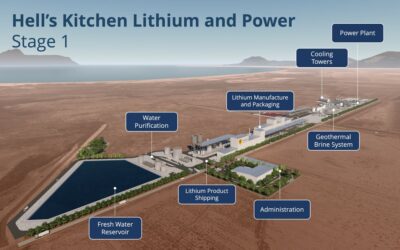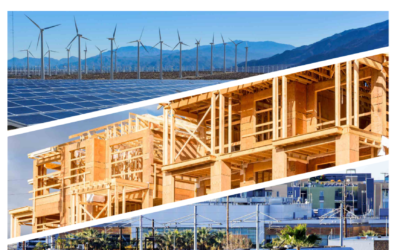As the country comes out of the COVID fog, the economy is heating up and placing increased demands for goods and services as well as infrastructure and housing. Investors in the U.S. currently hold an estimated $2.3 trillion in unrealized capital gains which represent an untapped resource for future economic development. In 2017, the U.S. Investing in Opportunities Act was established to encourage business investments into qualified areas, dubbed Opportunity Zones, with poverty rates of at least 20% or median family incomes lower than 80% of the statewide median.
Communities may leverage Opportunity Zone designations to support investments in real estate projects, businesses, schools, community facilities, equipment and infrastructure improvements. The Riverside County Economic Development Agency’s website (www.RivCoOZ.com) displays maps of Opportunity Zones in the county and highlights the benefits of investing in those areas.
In Riverside County’s Fourth District, there are seven Opportunity Zones. By far the largest is in the eastern Coachella Valley encompassing portions of La Quinta, Coachella, and the unincorporated areas of Thermal, Oasis, Mecca and North Shore. For communities facing housing insecurity or growing economic inequality, the Opportunity Zone designation provides tools to shape policies benefiting current and future residents, while providing new advantages to investors that are not available in most other real estate investments.
Qualified Opportunity Funds are a new private investment vehicle to facilitate “impact investments” in these designated areas, and allow investors to defer or, in some cases, cut capital gains taxes. The funds require a U.S. partnership or corporation to invest at least 90% of its holdings in one or more qualified Opportunity Zones, which will remain in effect through 2028. A variety of Federal departments and agencies have been tasked with targeting and coordinating Federal resources to be used to their fullest potential for economically distressed communities.
Just prior to the COVID outbreak, Riverside County Economic Development agency held an investor interest meeting at Fantasy Springs Casino. Some 60 people attended. Elaine Holmes, mayor of Indio and local business owner, was one of them. “From the business perspective, I hope they continue promoting Opportunity Zones. This is a good time to build, and the east end of the Valley is the next logical place for people to want to invest, Holmes said. “However, the Zone designations are in semi-remote areas. So, if investors are in a position to take advantage of tax credits, it’ll have to be just the right fit for just the right investor.”
Carl Morgan, the City of Indio’s Economic Development Director, is actively promoting their Opportunity Zone that stretches from the industrial area south of Interstate 10 and north of Indio Boulevard to the area bounded by Indio Boulevard, Monroe Street, Highway 111 and Oasis Street. His focus is on providing awareness of the program to real estate brokers and investors who demonstrate they want to integrate their project into a community that’s already leveraging resources such as Community Development Block Grants (CDBG) to provide services to residents.
Coachella is taking a page from the State of California’s playbook that offers prizes and incentives for people to get COVID vaccines. Coachella recently launched the Opportunity Coachella Business Attraction Competition and Community Engagement Survey. The city is making $15,000 in prizes available to companies of any size that seek to start, expand or relocate to Coachella or the neighboring unincorporated areas in the Opportunity Zone. The city prioritizes three business categories for approval: Clean Technology/Clean Energy, Recreation/Lodging, and Manufacturing/Advance Manufacturing.
“This is a great opportunity for Coachella to attract new businesses or businesses in transition that may want to relocate,” says Mayor Steven Hernandez. “We want to make the most of this opportunity where businesses that reap the tax incentives become more profitable while our residents benefit from good paying jobs that are close to home.”
Due to its location and income level, Desert Hot Springs has a large number of Census tracts that fit the Opportunity Zone designation. Several years ago, Desert Hot Springs became an early adopter of permitting and facilitating large-scale cannabis cultivation enterprises. Paula Turner of Desert Pacific Properties currently has a Desert Hot Springs parcel in escrow for a cannabis investor who is seriously exploring the Opportunity Zone tax incentives.
Now that cannabis is becoming more widely available and legal, developers are coming to the table to cash in on its return on investment. “Right now, apartment projects offer a 4 – 5% cap rate, while cannabis projects are paying in the 15 – 18% range,” says Turner. Cannabis investments in Opportunity Zones are controversial, in that the Federal government has not yet declared cannabis officially legal.
All the more reason, says Turner, why investors flush with post-pandemic cash are looking to take advantage of the Opportunity Zone’s benefits by creating Cannabis Opportunity Funds to support their industry. Desert Pacific Properties actively markets all Opportunity Zone incentives on several of the properties they represent throughout the Coachella Valley on their website (www.DesertPacificProperties.com).
Cathedral City actively recruits new development by attending International Council of Shopping Centers (ICSC) events to identify private sector partners that can complement the city’s current business clusters. “Our goal is to support business sectors that will make the Coachella Valley more economically resilient,” says Stone James, Economic Development Director. “We are looking to deepen and diversify our business community with more ‘traded sectors,’ that is, companies that produce goods or services that are sold not only to the neighborhoods, but beyond our borders.”
His take on the Opportunity Zones is that the legislation can be “nebulous” to private sector investors who aren’t convinced the current administration in Washington will carry the program through since it was enacted by the previous administration. “There’s not been as big a rallying cry for the Opportunity Zones as we’d hoped,” Mr. James offers. The potential for affordable housing projects is especially problematic, James noted, because they’re costly to build and take years to accomplish.
Despite some possible stumbling blocks, the Opportunity Zone program was intended to encourage communities to prepare for potential investments by thinking beyond individual transactions. By partnering on Opportunity Zone projects, communities may be able to align resources to achieve transformational outcomes.




